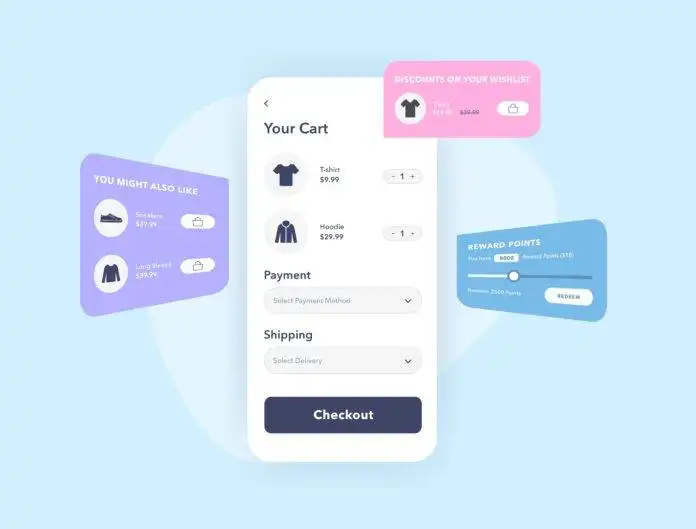Um dos maiores enigmas do comércio eletrônico brasileiro é sua alta taxa de abandono de carrinho, que já ultrapassa os 80%. Para entender melhor os motivos, a OneKey Payments divulgou o estudo ‘Pagamentos Disruptivos’ que revela os principais pontos que atrapalham uma jornada de compra.
– 62,6% dos consumidores já desistiram de uma compra online por conta do excesso de dados obrigatórios no preenchimento de formulários;
– 92,8% abandonaram a transação por não conseguirem acessar o dispositivo para onde foi enviado o código de autenticação (OTP);
– 93,7% interromperam a compra porque o site não carregou corretamente.
Processos de pagamento complicados, páginas lentas e exigências inesperadas estão entre os principais motivos. No entanto, a instituição de pagamentos responsável pelo levantamento acredita que novas tecnologias e modelos de pagamento têm o potencial de resolver esse problema histórico do comércio digital no Brasil. “O que os dados deixam claro é que a fricção no pagamento tem sido um fator-chave, mas pouco explorado, na desistência de compras”, explica César Garcia, CEO da OneKey Payments. “Por outro lado, muitos dos problemas apontados pelos consumidores já podem ser resolvidos com soluções inovadoras.”
Embora os lojistas estejam começando a perceber a importância da etapa de pagamento na conversão de vendas, o levantamento aponta que apenas pouco mais da metade (54%) dos varejistas considera a experiência de pagamento como algo fundamental para a reputação da marca.
César compara esse número com o de consumidores: quase três em cada quatro (73,1%) afirmam que o método e o processo de pagamento preferido podem ser decisivos na hora de escolher entre duas marcas concorrentes.
“Ainda existe um descompasso entre o quanto o consumidor valoriza a experiência de pagamento e o quanto o lojista enxerga esse valor”, avalia. Quase nove em cada dez consumidores (87,5%) consideram seu processo e método de pagamento preferido como algo ‘importante’ (73,1%) ou ‘fundamental’ (14,4%) na decisão de compra.
Hoje, o consumidor digital espera pagamentos rápidos, de um clique, e desiste com facilidade de jornadas de checkout longas ou complicadas. “Pagamento não é só tecnologia, é confiança, fidelização e crescimento sustentável”, ele afirma. “Se você oferece ao consumidor brasileiro um processo intuitivo, seguro, previsível e sem atrito, sua marca será tão valorizada quanto o próprio produto ou serviço que entrega.”
A empresa aponta o Pix como um exemplo de como a tecnologia, quando pensada com foco no usuário, pode superar as barreiras do abandono de carrinho. O Pix já ultrapassou os cartões de crédito como método mais usado para compras online, e também já é mais popular que o dinheiro vivo em pagamentos presenciais. “Ele é simples, seguro e rápido, em essência, tudo o que um pagamento deveria ser. E com os pagamentos recorrentes, especialmente com o lançamento recente do Pix Automático, o sistema redefine a forma como as marcas podem oferecer conveniência e fidelização, eliminando etapas repetitivas em compras periódicas, como assinaturas e serviços recorrentes. O mercado de pagamentos e o varejo online ainda têm muito a aprender com o Pix”, comenta o executivo.
Tecnologias como pagamento com um clique, pagamentos recorrentes, autenticação biométrica e sistemas avançados de detecção de fraude já estão disponíveis para instituições de pagamento e varejistas, e podem resolver de vez os antigos obstáculos do e-commerce. As carteiras digitais, que funcionam como uma “carteira virtual” dentro do celular, guardam os dados do cartão de forma segura e evitam que o consumidor precise digitar tudo de novo a cada compra. Isso deixa o processo mais rápido e com menos chances de abandono. Além disso, inovações em prevenção a fraudes, com uso de inteligência artificial e machine learning, tornam a experiência mais segura sem adicionar barreiras como códigos enviados a dispositivos secundários.
Com taxas de abandono ainda tão altas, cabe agora aos provedores de pagamento integrar essas soluções com foco em segurança e eficácia operacional, mostrar seus benefícios ao varejo e, principalmente, entregar a experiência de compra que o consumidor não só espera, mas exige”, conclui César.


